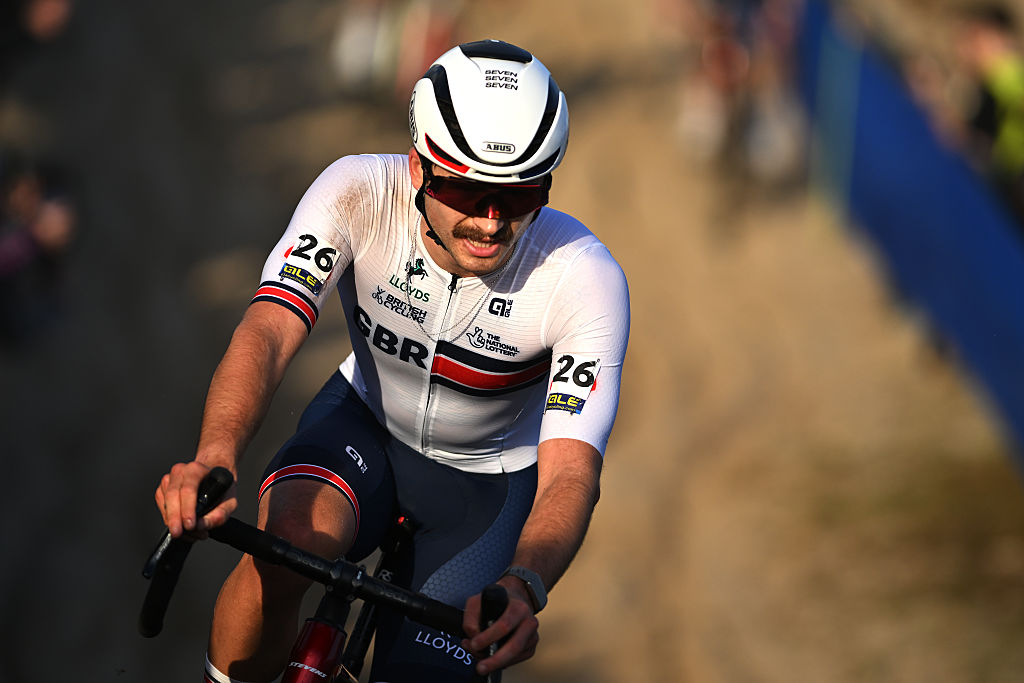How bright should my bike lights be? The perfect lumen number for every scenario
How many lumens you actually need to save you from overspending on wasted power?
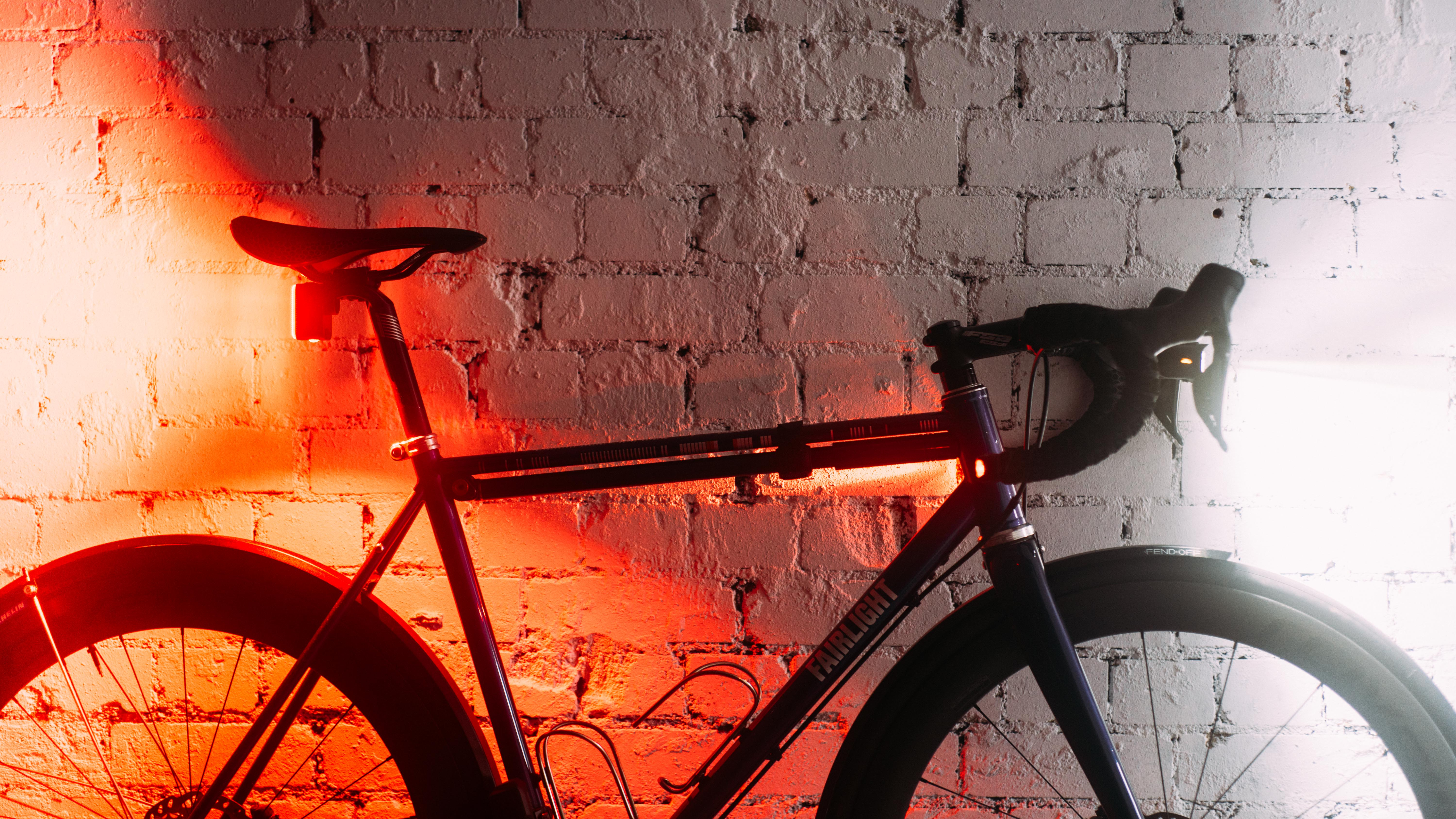
With darker mornings and evening, plus lower sun more prevalent during more of our ride times, it makes sense to fit a set of the best bike lights for commutes, weekend club runs, or just day to day riding. Fortunately, the range of lights available at the moment is huge, with an array of price points and brightnesses to suit any occasions. Even our list of the best budget bike lights is packed full of quality nowadays. But with lights being rated based on their lumens, and price often linked to the number of them, just how many lumens do we need for a light to be effective?
But what are lumens? We used to measure light brightness in watts, but now LEDs are the dominant light source used and use fewer watts. Along came lumens, which is a measure of how bright a light is; the total light output from the source. This is how most bike lights brightness is quantified, and is in general a good rule of thumb for determining and lights effectiveness for a given environment.
There is another measure though, one not often given by manufactures, which is Lux. This is a measure of how much light falls on a surface area, one lux is equal to one lumen per square metre. It's an important measure, but requires actual maths for it to become useful, so we're just going to stick to good old fashioned lumens here.
Essentially, when it comes to lights, we want to know how bright the light is,. But also how it directs that light. This also varies for front versus rear, as they fulfil different purposes.
Town commuting
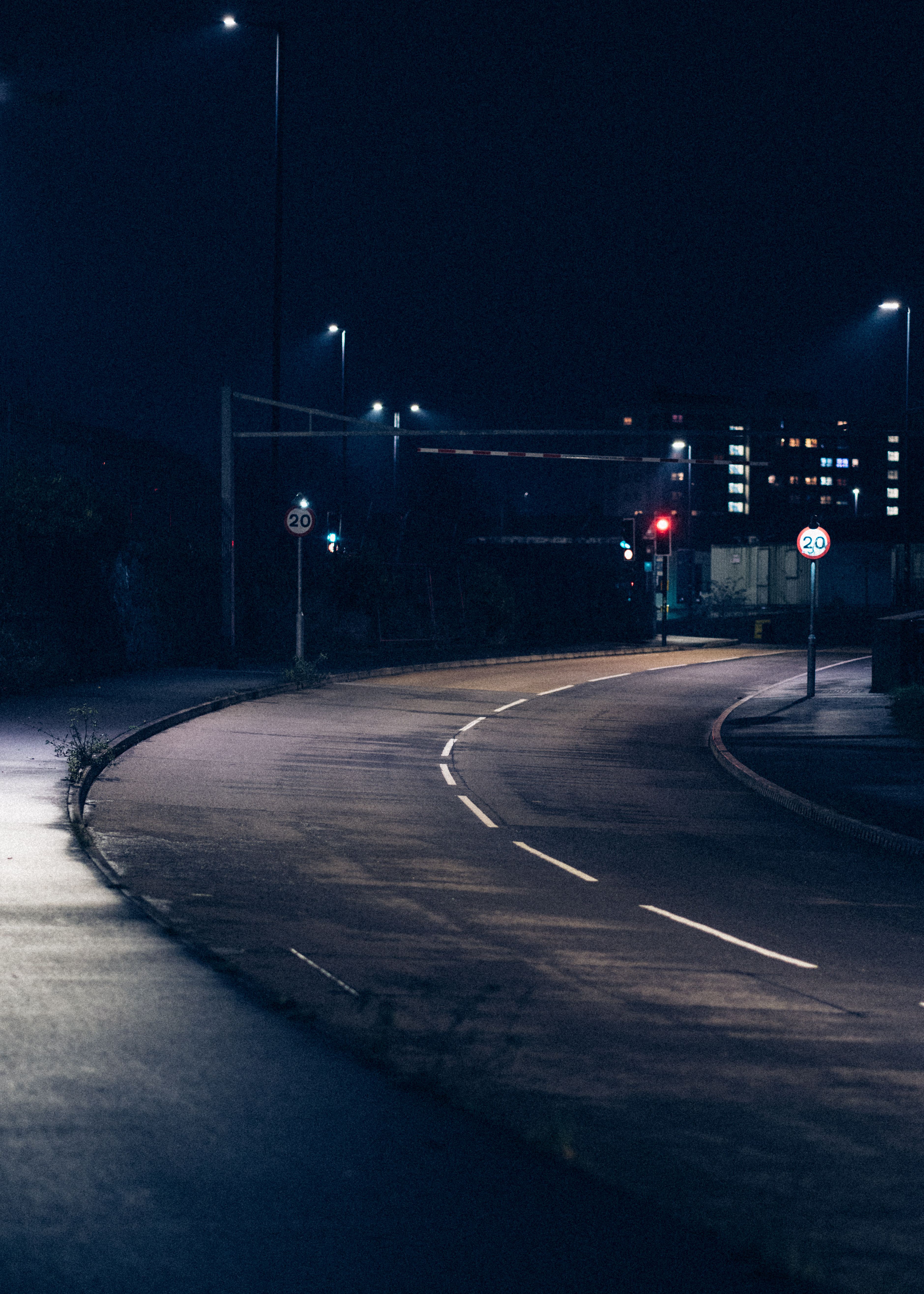
This is one of the scenarios where light brightness does not actually have to be overly high. Most towns and cities have well illuminated roads for riding in low light. Rather than trying to illuminate the road ahead, you are ensuring you remain visible to other road users and pedestrians. You'll often see lights labeled as 'be seen'
Ideally a front light should be 100-200 lumens, with the rear being 50-100. Given visibility is key rather than illumination, a disrupted flash pattern (a non-regular flash sequence, rather than a metronomic one) is optimal since it draws attention to the light and yourself. A metronomic, regular flash pattern can in some ways blend into the general flash of lights that can happen occur in cities, so a more distinctive and disruptive pattern has been shown to be more visible to other people.
In terms of the actual light a spot light with some flood is useful. You want to light to be visible from a good distance but don’t need to flood the road immediately in front, but some side visibility is useful when cycling past any streets where traffic may be emerging from.
The latest race content, interviews, features, reviews and expert buying guides, direct to your inbox!
If you want a good one-and-done option then Trek's Ion/Flare light set is great, and they're super visible in daylight too. Just don't expect to be able to see on unlit lanes.
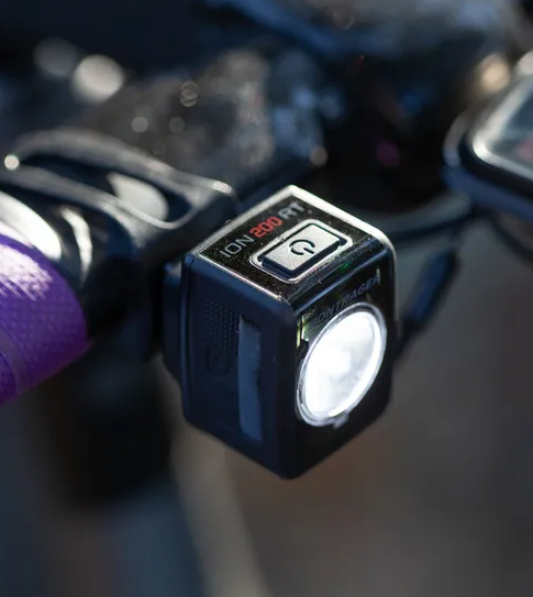
Tiny but mighty, the Trek Ion & Flare light set has a flash pattern designed to be visible from a great distance without taking up loads of space on your bars. They'll clip on and off easily, and have enough battery to last for a commute, and general city riding duties.
Rural commuting
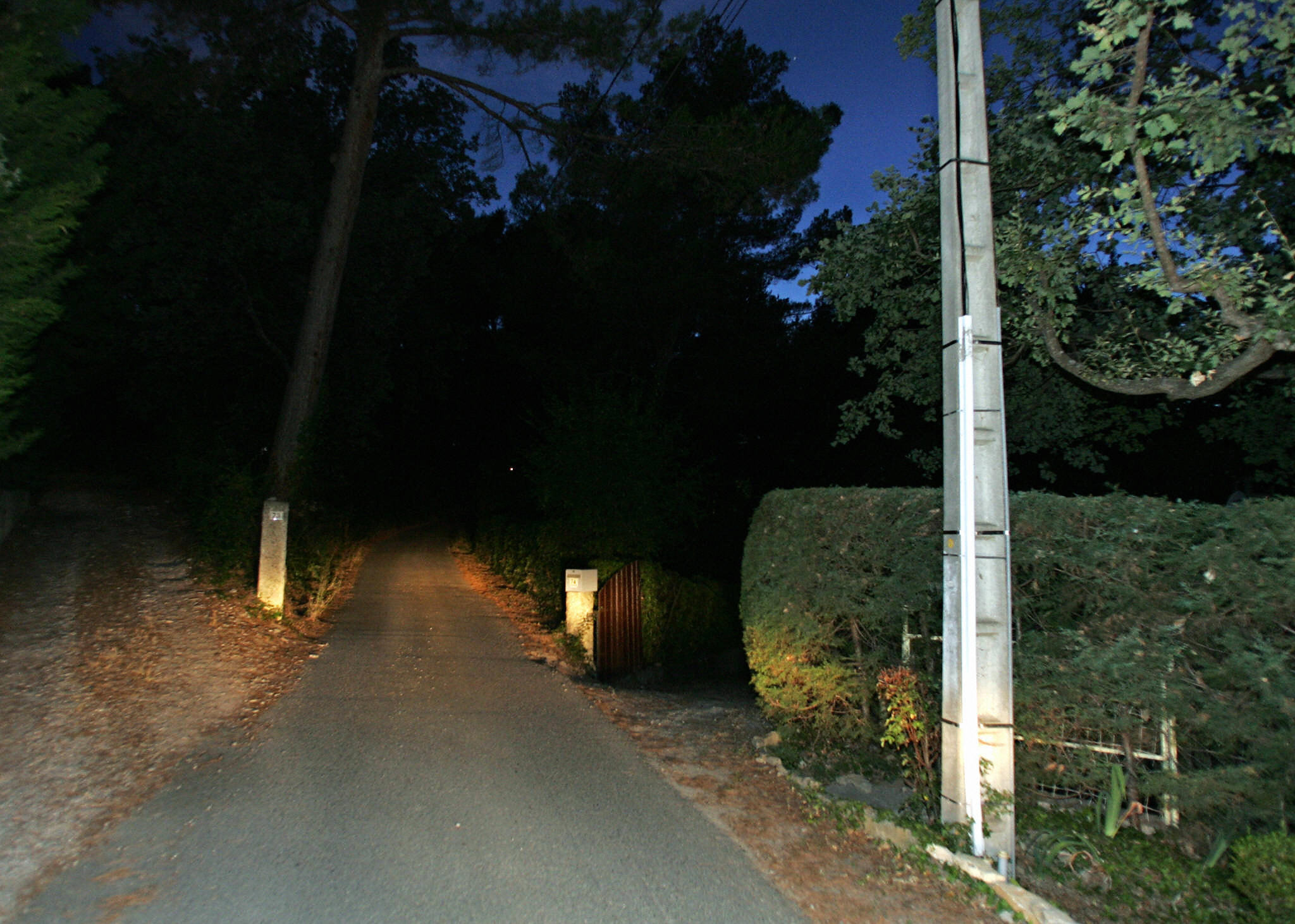
Not everyone's commute is entirely urban. There might be lanes, or bike paths which often do not have the same level of illumination. The occasional lamp every few hundred metres is far more likely leaving large areas of pathway un-illuminated.
At this point, the power of your flood beam becomes more important as you are wanting to illuminate as much of the road as possible to see obstacles such as potholes and road debris. Quite often you can get lights that feature two specific light beams (a flood and a spotlight/cut-off beam), and that can be useful here.
In terms of beam patterns, either a full beam, or a full beam with pulse flash is best as it lights the road but also draws attention to you. The same goes for a rear light but flooding the road behind is far less essential.
Lumens wise, the rear can remain around 100 lumens, while the front light should be 400-600. At this power as well, often the battery life is 2-3 hours on full power, so generally enough for most commutes to and from work.
Something like the Cateye AMPP400S up front paired with something like a Knog Blinder at the back would be perfect.
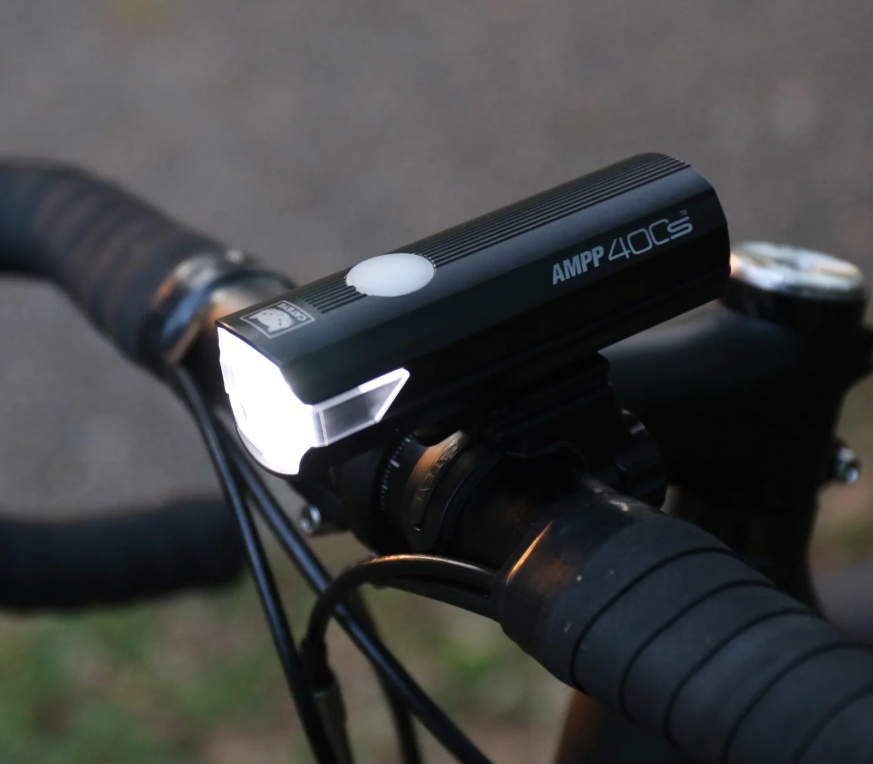
With a bracket that easily mounts to any handlebar, and a simple mode selection, the AMPP400S is just right for getting you to and from work if your route takes you on some unlit sections every now and then.
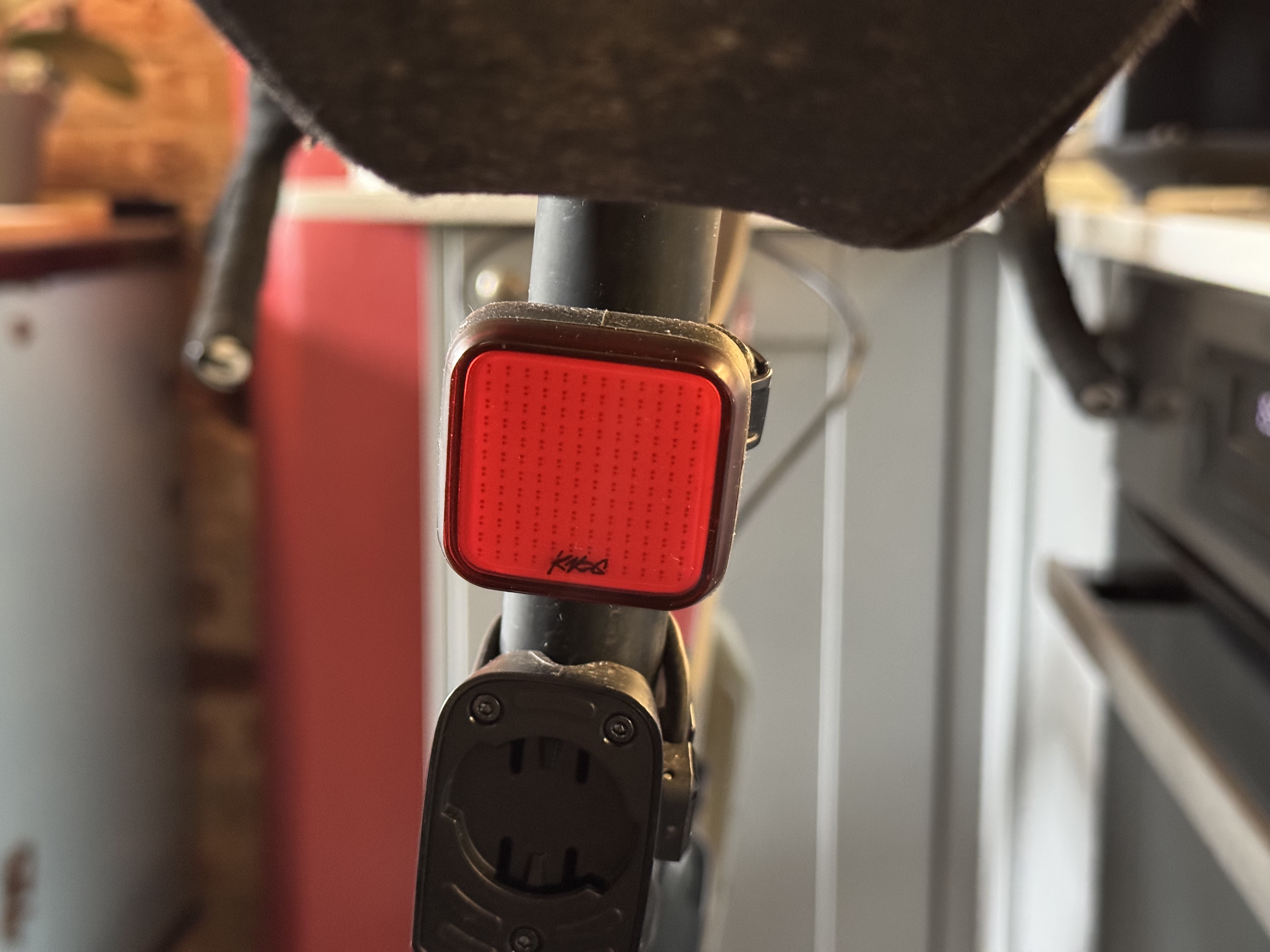
Bright, simple to use, relatively inexpensive, and available in some fun designs too if you want to add a bit of personality to your bike.
Night road riding
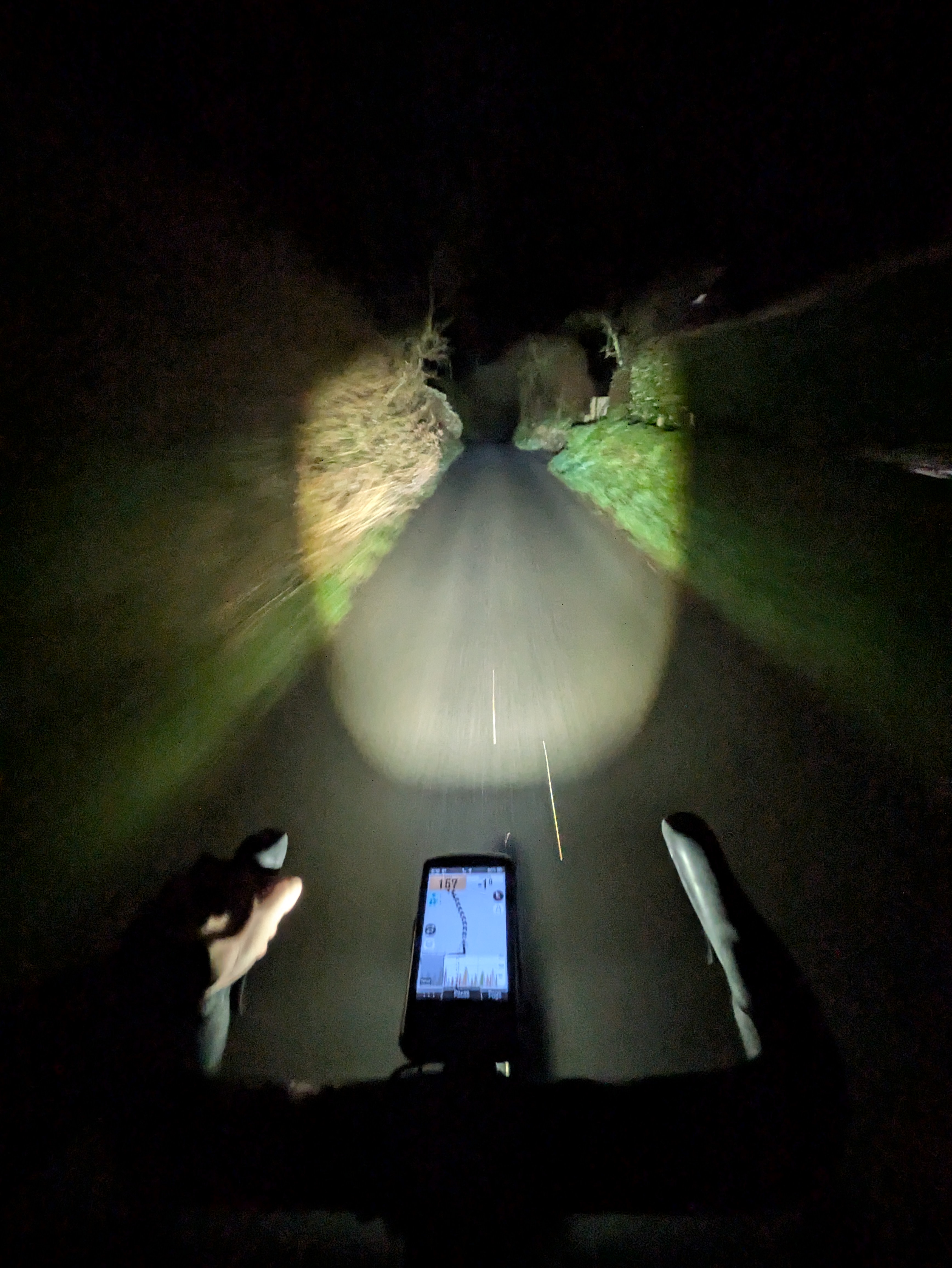
Looking here at perhaps very early morning group rides, or after work social rides, even just when you have time to get out for a few hours. This could be within a town/city or out in rural areas.
Again the peak lumens required will be in the 600, maybe up to 1,200 if you're on more narrow twisty lanes with poor surfaces. But battery life is also an important factor, too, if you want to get a decent ride in. Looking at the Knog Blinder 600 front bike light for example; on full power at 600 lumens it has around 2 hours of life before dropping down to a power save mode.
However, the more powerful 900 or 1300 can be used at 600 lumens for a significantly longer period of time. The cost of this increased power is an increased price and often a longer charge time, but the extra battery life is normally worth it, plus knowing you can go brighter when you need to is also handy.
As for the rear light, 100 lumens again should be enough to provide plenty of visibility to other road users.
The best of the best here would be the Exposure Strada – truly the Rolls Royce of bike lights – but a combination of the Knog Blinder 1300 at the front and the truly incredible Magicshine SEEMEE300 at the back will stand you in good stead.
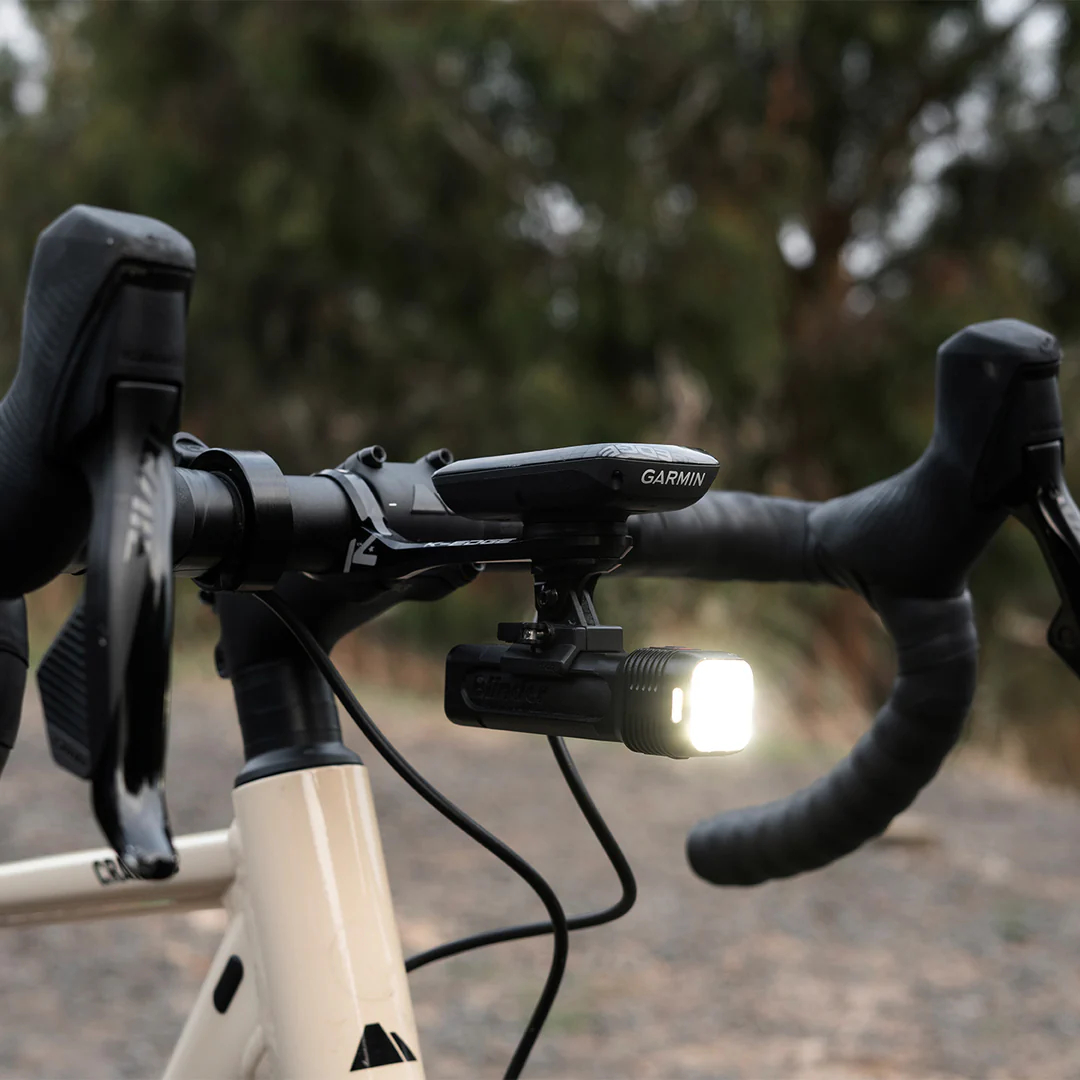
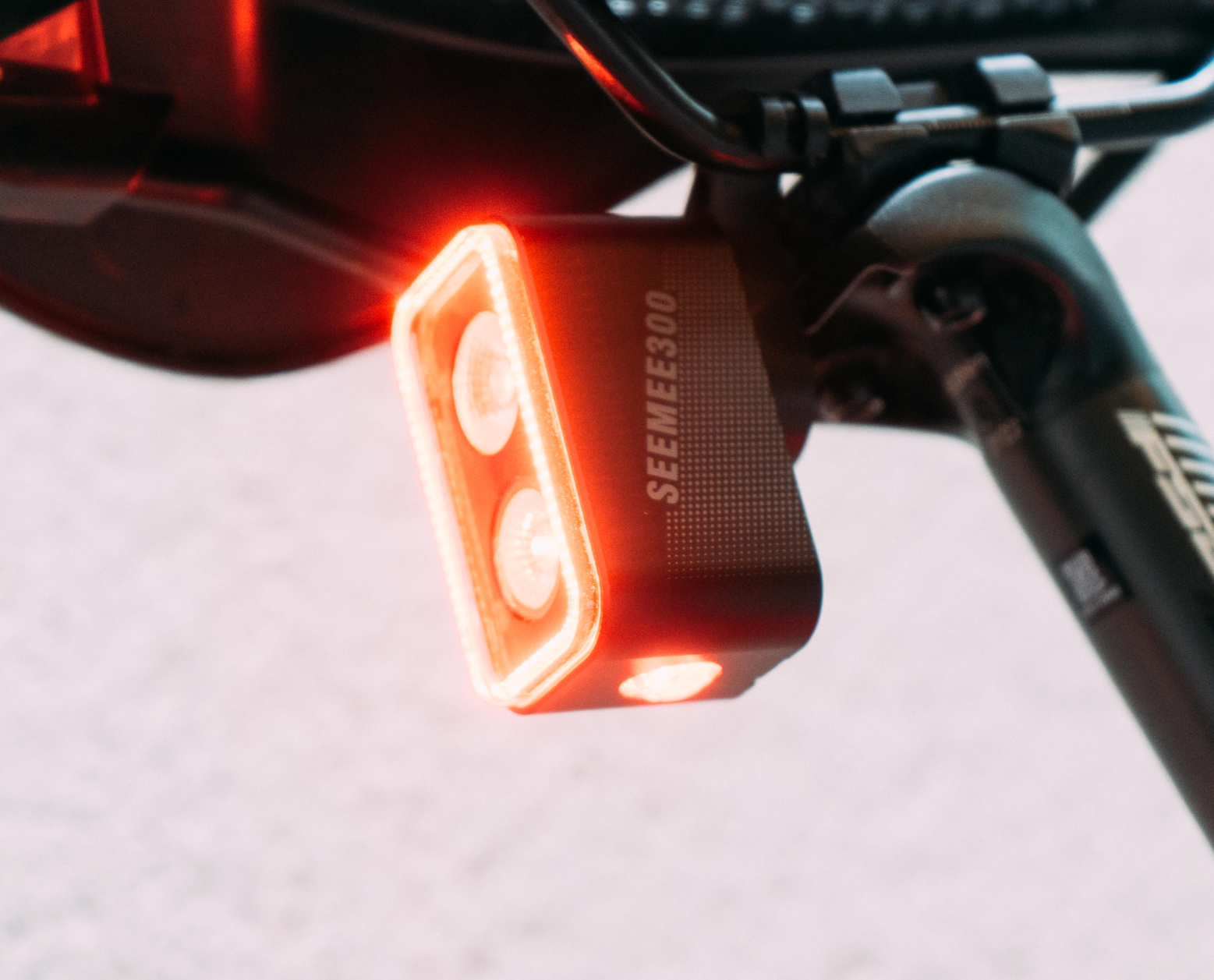
Hands down the best rear bike light out there. A 300 hour battery life (no, really) and a downward-pointing LED to illuminate the road beneath you for added visibility.
Off-road riding
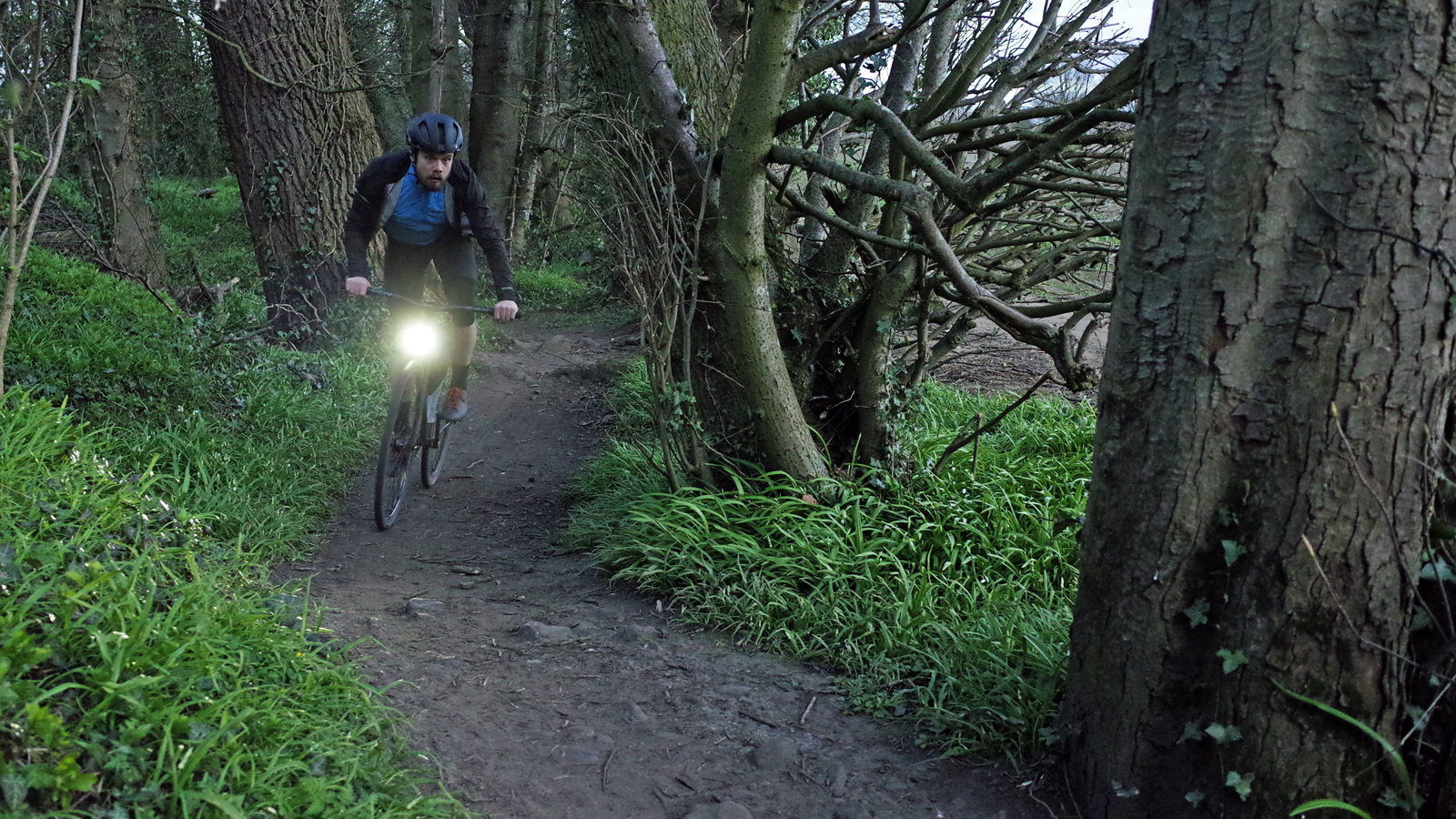
This is where a significantly more powerful light becomes more beneficial. Be it gravel or mountain bike, off-road riding comes with the potential for far more hazards to avoid. The best combination for these riding conditions is actually two lights. One on the helmet with a focus on the spot light so you can see further ahead where you are looking, while on the bars you want a more powerful flood light so as to illuminate the path in front very clearly.
Because of the need to see the trails in more detail, brighter is better. You want a minimum of 800 lumens for well-graded gravel, and possibly more than 1,500 and up into 2,000 if you are doing faster trails where obstacles come up on you quickly and you need to react fast.
For the rear you actually don't want something crazy bright if you're riding with others as it can dazzle them. The SEEMEE300 above would work well on low power, and it's hardy enough to take being blasted with mud. Up front an Exposure Race would do for most situations, and it has an option to automatically adjust the brightness depending on your speed, getting brighter for descents, and dimmer on climbs.
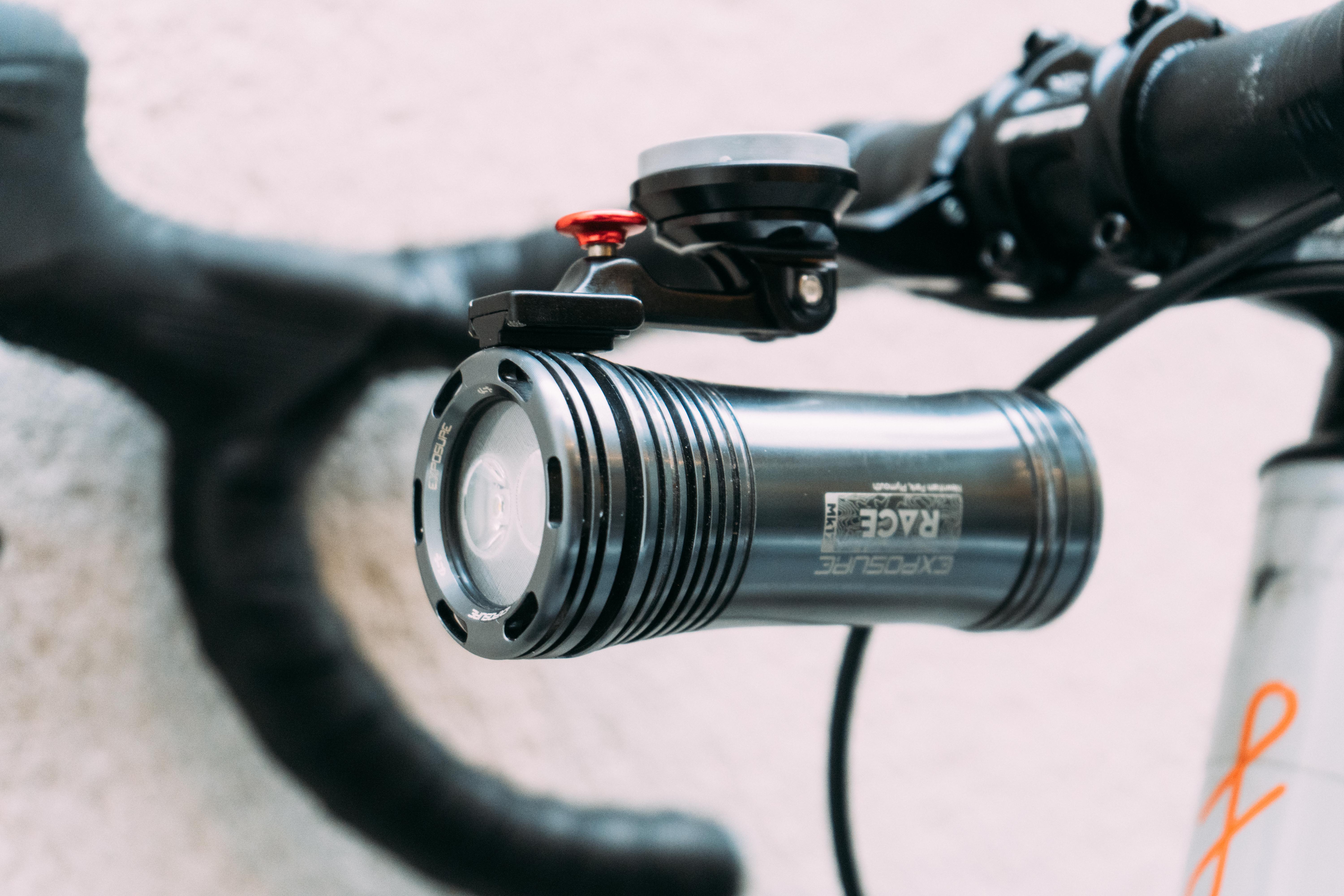
Off-road night riding is demanding, but the Exposure Race is more than a match for it. It's basically indestructible, bright enough for just about any situation, and can even auto-adjust depending on your speed.
Daylight
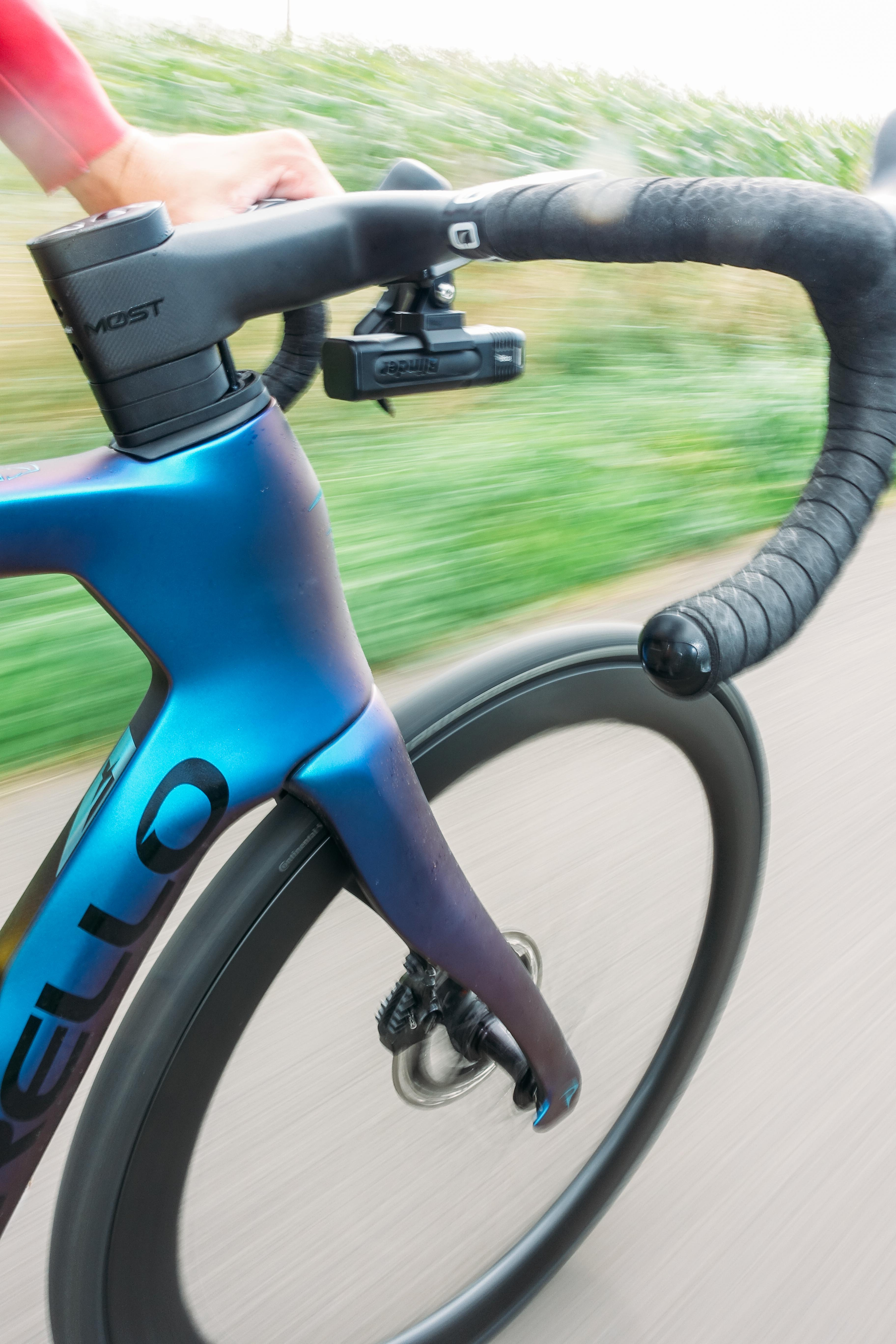
You be forgiven for thinking that day time riding and daylights don’t require as many lumens to be as visible. Counterintuitively, you need more than you think, given that these lights need to stand out against the sun which is significantly brighter. In low light conditions, you need one ideally that has at least 400 lumens of power, both front and rear. In more regular conditions during the day, 200 front or rear is adequate for good visibility to other road users.
What is more important though is the flash pattern. Again a disrupted flash is best front and rear, as it draws attention to you far greater than a generic flash pattern. The Wahoo TRACKR Radar does a very good job here as it has multiple flash patterns, dual LEDs, and when a car behind is detected, it starts to flash brighter and more erratically to draw extra attention.
You do however, need to consider that you will likely be riding for longer in the day, so using a 200 lumen front and rear light could drain the power quickly if the light is less powerful and working at a higher percentage of the max. The Lezyne Strip Drive Pro 400+ for example can manage 30 hours on its 200 lumen daylight setting, and 18 hours on the 400 lumen one. Meanwhile the Knog Blinder Rear only manages just over 4 hours on the 100 lumen High Flash.
This is less of a concern with front lights since more often than not they are greater than 500 lumens in power, so running at 400 or 200 has a longer battery life with flash modes. The Knog Blinder Pro 600 for example can run the 300 lumen Steady Pulse mode for 8 hours or 150 lumen Strobe for 16 hours.
If you just want an easy solution then the Trek Ion/Flare light set is specifically designed for daylight visibility, so makes a perfect one-and-done solution.

Tiny but mighty, the Trek Ion & Flare light set has a flash pattern designed to be visible from a great distance without taking up loads of space on your bars. They'll clip on and off easily, and have enough battery to last for a commute, and general city riding duties.
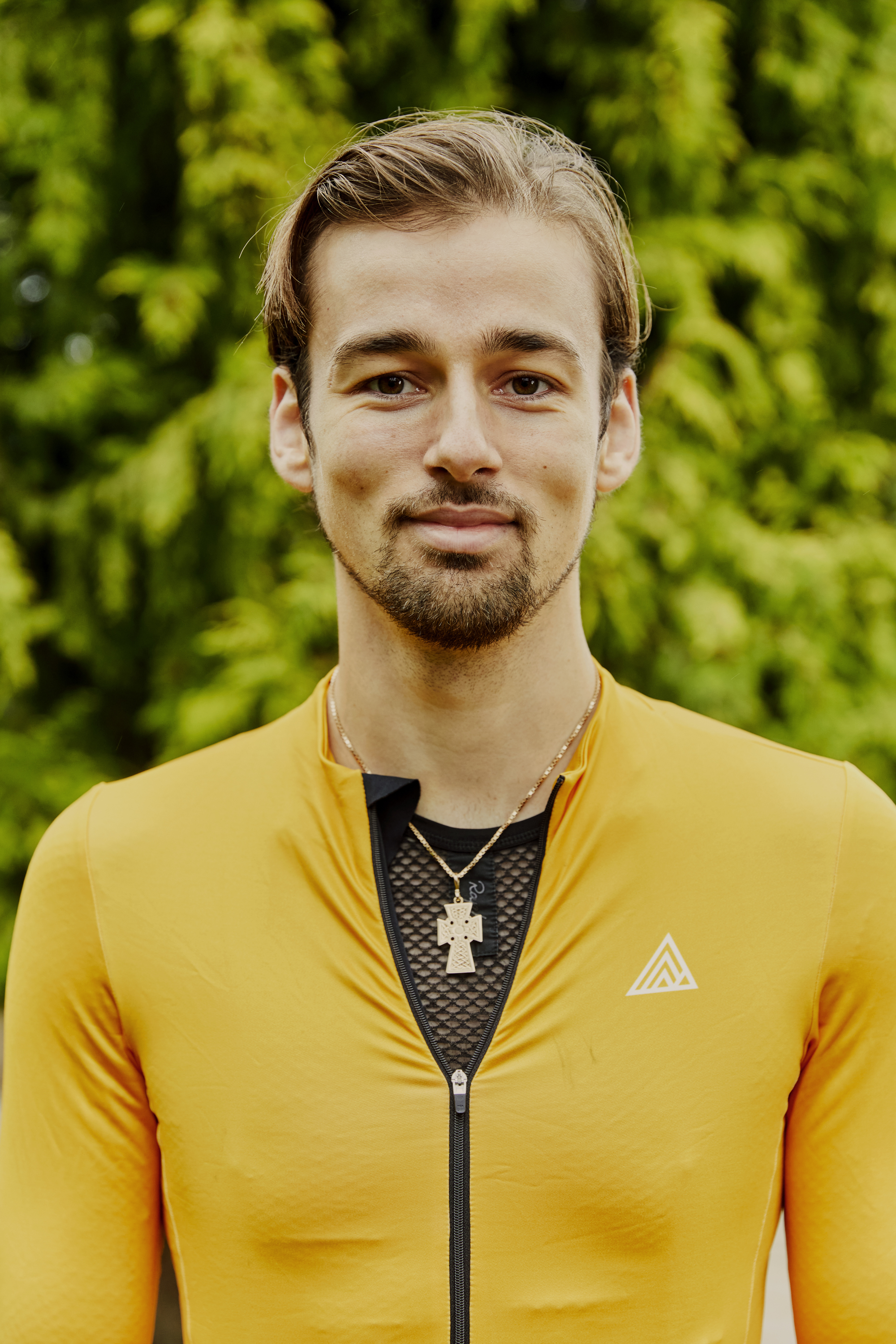
Freelance cycling journalist Andy Turner is a fully qualified sports scientist, cycling coach at ATP Performance, and aerodynamics consultant at Venturi Dynamics. He also spent 3 years racing as a UCI Continental professional and held a British Cycling Elite Race Licence for 7 years. He now enjoys writing fitness and tech related articles, and putting cycling products through their paces for reviews. Predominantly road focussed, he is slowly venturing into the world of gravel too, as many ‘retired’ UCI riders do.
When it comes to cycling equipment, he looks for functionality, a little bit of bling, and ideally aero gains. Style and tradition are secondary, performance is key.
He has raced the Tour of Britain and Volta a Portugal, but nowadays spends his time on the other side of races in the convoy as a DS, coaching riders to race wins themselves, and limiting his riding to Strava hunting, big adventures, and café rides.
You must confirm your public display name before commenting
Please logout and then login again, you will then be prompted to enter your display name.
